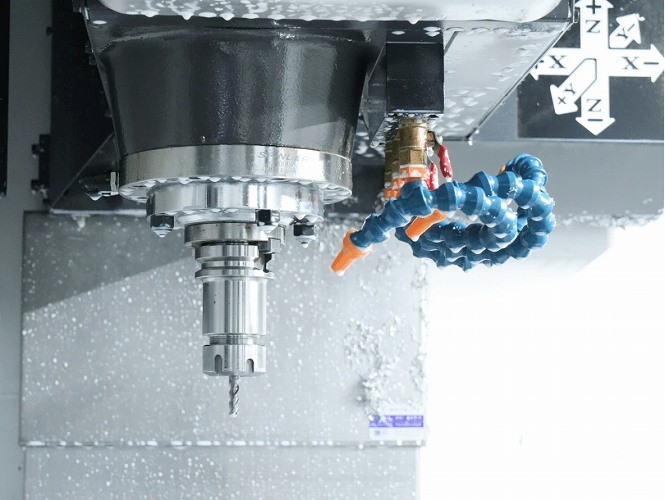Common Mistakes to Avoid in Low-Volume CNC Milling Projects
Low-volume CNC milling is ideal for prototyping, custom parts, and small production runs. It offers flexibility, cost savings, and quick turnaround times. However, achieving high-quality results requires careful planning. Many manufacturers make common mistakes that lead to production delays, excessive costs, or poor-quality parts. These errors often stem from improper material selection, design flaws, tolerance miscalculations, or overlooking manufacturing constraints.
In this article, we’ll explore the most common mistakes in low-volume CNC milling projects and how to avoid them. By understanding these pitfalls, you can improve efficiency, reduce waste, and ensure high-precision CNC milling components.
Common Mistakes and Solutions to Low-Volume CNC Milling Projects
Low-volume CNC milling is widely used for prototyping, custom parts, and short production runs. While it provides flexibility and faster turnaround times compared to large-scale manufacturing, it also presents unique challenges. Many manufacturers make costly mistakes that lead to inefficiencies, dimensional inaccuracies, or unnecessary expenses.
The key to success in low-volume CNC milling is to optimize every stage of the process—from design to machining execution. This section will explore the most common mistakes made in low-volume CNC milling and offer practical solutions to help manufacturers improve part quality, minimize costs, and maximize efficiency.
Mistake: Overlooking Toolpath Optimization
A poorly optimized toolpath increases machining time, accelerates tool wear, and results in poor surface finishes. Inefficient movements, such as excessive retractions, abrupt direction changes, and unnecessary air-cutting, reduce overall productivity and lead to inconsistent part quality. Additionally, suboptimal cutting strategies create excessive heat buildup, which not only shortens tool life but also affects material stability.
In low-volume CNC metal milling, every machining operation needs to be efficient to minimize cycle time and production costs. Poor toolpath planning can also cause chatter, leaving undesirable marks on the part surface and increasing the likelihood of defects. Optimizing toolpaths ensures smooth tool engagement, better chip evacuation, and improved accuracy in machining complex geometries.
Solutions:
- Use Adaptive Clearing Strategies: Modern CAM software allows for high-efficiency roughing strategies that optimize material removal while reducing tool stress.
- Optimize Cutting Sequences: Arrange tool movements to minimize non-cutting travel time and avoid unnecessary repositioning.
- Fine-Tune Feed Rates and Speeds: Match the cutting parameters to the tool and material to achieve the best balance of efficiency and surface finish.
- Use Trochoidal Milling for Hard Materials: This technique helps manage heat and tool load by using a circular toolpath with controlled engagement.
- Run CAM Simulations Before Machining: Software simulations help detect toolpath inefficiencies and collisions before machining begins.
Mistake: Ignoring Thermal Expansion in Metals
Metals expand when exposed to heat, and if not accounted for, this expansion can lead to serious dimensional inaccuracies in CNC-milled parts. In low-volume production, where each part may have unique dimensions or tight tolerances, even slight expansion can cause misalignment, incorrect hole placements, or interference in assembled components.
Heat generated from machining, friction, or ambient environmental conditions can all contribute to material expansion. If a part is cut precisely without considering thermal effects, it may shrink back when cooled, resulting in incorrect final dimensions. Ignoring this factor can lead to costly rework or unusable parts. Engineers must anticipate expansion effects, adjust tolerances accordingly, and control machining conditions to ensure dimensional stability.
Solutions:
- Choose Low-Expansion Materials for High-Precision Parts: Metals like Invar have lower thermal expansion and are better suited for applications requiring tight tolerances.
- Control the Machining Environment: Maintain a consistent room temperature to prevent material expansion due to external heat sources.
- Use Coolant or Mist Systems: These help dissipate heat and reduce the chances of thermal expansion affecting the part.
- Allow the Part to Normalize Before Final Machining: Rough machine the part first, let it stabilize at room temperature, then perform finishing passes to achieve the desired accuracy.
- Adjust for Thermal Expansion in Design: If working with high-expansion materials, slightly modify tolerances to compensate for expected dimensional changes.
Mistake: Poor Communication with Machine Shops
A lack of clear communication between designers and machinists often results in machining errors, unnecessary rework, and project delays. One of the biggest issues arises when design teams fail to provide comprehensive drawings or detailed specifications, leaving critical tolerances, material choices, or surface finish requirements ambiguous. Without proper documentation or discussion, machinists may make assumptions that lead to nonconforming parts.
Additionally, failing to discuss manufacturability constraints early in the process can result in designs that are difficult or impossible to machine efficiently. Poor communication can also lead to unexpected cost overruns if additional machining steps are required to correct issues.
Solutions:
- Provide Detailed Technical Drawings: Always include fully annotated 2D drawings alongside 3D CAD models to clarify design intent.
- Discuss Manufacturing Constraints Early: Consulting with the machine shop before finalizing the design helps identify potential manufacturability issues.
- Specify Key Tolerances Clearly: Instead of applying tight tolerances to all features, indicate which dimensions are critical to function.
- Request Prototype Feedback: Have the shop produce a prototype and provide insights before committing to full production.
- Use Standardized File Formats: Provide CAD models in universally accepted formats like STEP or IGES to prevent compatibility issues.
Mistake: Selecting the Wrong Cutting Tools
Using the wrong cutting tools for a given material or machining process can lead to excessive tool wear, poor surface finishes, and inefficient machining cycles. Tool material, coating, geometry, and flute design all play critical roles in achieving optimal results. For instance, using high-speed steel tools on hardened metals instead of carbide tools results in premature tool failure and excessive heat generation.
Similarly, selecting a tool with incorrect rake angles or flute count can lead to poor chip evacuation, increasing the risk of tool breakage and workpiece damage. In low-volume CNC milling, where precision and efficiency are key, improper tool selection can result in wasted material, longer cycle times, and increased operational costs.
Solutions:
- Match the Tool Material and Coating to the Workpiece: For example, carbide tools with TiAlN coating are excellent for high-speed machining of hardened metals.
- Use Sharp Tools for Soft Materials and Radiused Tools for Harder Metals: Sharp-edged tools prevent burr formation in plastics, while radiused edges reduce chipping in metals.
- Optimize Tool Length to Minimize Deflection: Using the shortest possible tool for a given operation prevents vibrations and improves accuracy.
- Use High-Feed Milling Tools for Improved Efficiency: These tools allow for aggressive material removal while reducing overall machining time.
- Regularly Inspect and Replace Worn Tools: Dull tools create excessive heat and poor finishes, increasing the likelihood of defects.
Mistake: Not Accounting for Workholding Challenges
Inadequate workholding can cause vibration, shifting during machining, and significant dimensional inaccuracies, leading to scrapped parts and production delays. Unlike high-volume production, where dedicated fixtures are often designed for repeatability, low-volume CNC milling requires flexible yet secure clamping solutions to accommodate different part geometries. Poor fixturing can result in excessive tool deflection, chatter, and misalignment, affecting part accuracy and surface finish.
If the part is not held securely, cutting forces may shift its position, leading to deviations from intended dimensions. Additionally, improper clamping can introduce stress into the material, causing warping or distortion after release. To prevent these issues, machinists must select the appropriate workholding method—whether using custom soft jaws, vacuum fixtures, or modular vises—to achieve stability, minimize vibrations, and maintain precise tolerances throughout machining.
Solutions:
- Use Custom Fixtures or Soft Jaws for Complex Parts: These provide better grip without damaging delicate components.
- Implement Vacuum or Magnetic Workholding for Thin Parts: This method prevents distortion while ensuring even clamping pressure.
- Avoid Over-Tightening Clamps on Soft Materials: Excessive force can warp aluminum and plastics, leading to inaccuracies.
- Test Workholding Setups Before Production: Running a dry test cycle ensures parts remain stable throughout machining.
- Use Modular Workholding Systems for Quick Changeovers: These allow for faster setup times and improved consistency across multiple low-volume parts.
Mistake: Overlooking Post-Machining Processes
Even with precise CNC milling, post-machining processes—such as deburring, surface finishing, and quality inspections—are essential to ensuring the final part meets functional and aesthetic standards. Many manufacturers focus solely on machining accuracy but overlook these critical steps, leading to parts with sharp edges, surface defects, or inconsistent finishes. Deburring removes burrs that can interfere with assembly or pose safety risks.
Surface treatments like anodizing, plating, or polishing enhance durability and corrosion resistance, but if not planned for, they can alter part dimensions. Inspection processes, including CMM verification and visual checks, confirm that tolerances are met before parts reach the end-user. Skipping or rushing these steps can result in rework, rejected parts, or field failures.
Solutions:
- Plan for Surface Finishing Needs: If anodizing, plating, or polishing is required, design parts with appropriate tolerances to accommodate material removal.
- Implement a Thorough Inspection Process: Use CMM (Coordinate Measuring Machine) or laser scanning for high-precision parts to verify dimensional accuracy.
- Perform Deburring to Remove Sharp Edges: Manual or automated deburring prevents assembly issues and improves part safety.
- Consider Stress Relieving for Large or High-Stress Parts: Processes like heat treating can help stabilize the material and reduce residual stresses.
- Account for Assembly and Fit Testing: If the milled parts will be assembled, verify tolerances and alignment before finalizing production.
Conclusion
Low-volume CNC milling requires careful planning and execution to ensure efficiency, accuracy, and cost-effectiveness. Common mistakes—such as poor toolpath optimization, ignoring thermal expansion, miscommunication with machine shops, incorrect tool selection, inadequate workholding, and neglecting post-machining processes—can lead to production delays, increased costs, and defective parts. By proactively addressing these challenges, manufacturers can improve machining efficiency, reduce waste, and achieve high-quality results. Attention to detail and collaboration between designers and machinists are key to successful low-volume CNC milling projects.






